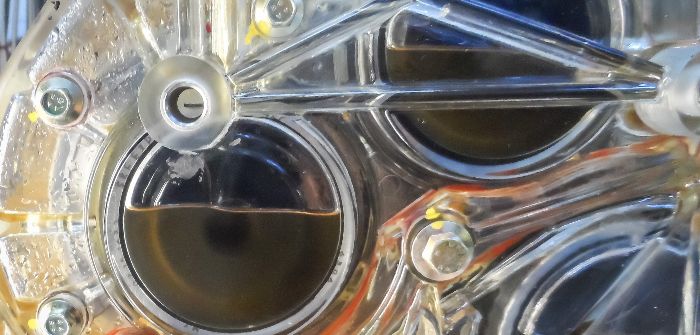With more electrified drivetrains being developed than ever before, John Morton, engineering director for Drive System Design, discusses the transmission design process.
 “We [at DSD] can’t really see it as just a transmission anymore. For quite a while now we’ve been focusing our attention on integrating other features into the drivetrain, such as electric motors.
“We [at DSD] can’t really see it as just a transmission anymore. For quite a while now we’ve been focusing our attention on integrating other features into the drivetrain, such as electric motors.
“It’s not actually that expensive to keep adding ratios, but once you start looking at hybrid systems, the torque profile of a combustion engine and the torque profile of an electric machine are so different that you would probably need fewer ratios. Obviously, with an electric vehicle you can often get away with just one fixed ratio.”
Will we start to see fewer manual transmissions?
“Our research says that manual transmissions are still going to grow in overall volume. I suspect that the development of manual transmissions isn’t going to go too much further, but combustion engines will be around for a long time and there are a lot of emerging markets that are growing.”
How are transmission testing techniques changing?
“We spend a lot of time in the virtual environment. One of the things we’ve not been able to do much on previously was fluid simulation. Computational fluid dynamics (CFD) is a great analysis technique, but we’ve been looking for something we can use as a design tool.
“We’ve been investigating different methods of simulating fluids, so we can actually incorporate those into the design process. We’re making good progress with particle hydrodynamics in place of CFD.
“With CFD you create a mesh environment and solve from that. With particle hydrodynamics you approximate the fluid to a collection of particles. You can scale that to the point where it has a very good approximation to the fluid, yet it is still quite quick to process.
“For CFD you might set up a simulation of a couple of gears rotating in a fluid and then spend literally weeks getting a few seconds of data. If you start from stationary and you’re going up to 5,000rpm you might not even have reached a steady-state flow by the end of that simulation. With particle hydrodynamics we find we can get much more simulated time into much less real time – it’s probably in the order of 10 times quicker. We’re now pushing that and trying to add thermal analysis into that process; with conventional methods that takes even longer to stabilize.”
Why is DSD so interested in thermal effects?
“One of the areas we’re looking into is electric motor design. We’re looking at integrating the fluid systems, so the transmission lubrication is provided by the same substance as the motor coolant. That’s one of the reasons we’re so interested in thermal effects. We’re looking at using the software to predict how the spray out of a rotor would stick to the windings, how the heat would then transfer to that fluid and how the fluid would drip off. You can imagine how complex that is.”
Are thermal rigs increasing in importance?
“Transmission cooling becomes far more critical when you’ve got batteries and electric motors in there, so we’ve built a rig to measure the thermal behavior of the oil system. If you look at the heat rejection of a conventional transmission, it’s nowhere near as much as the motor that you’re adding, so the oil will heat up a lot more. You’ve also got the added complexity that the electronics tend to heat up and cool down much quicker than the motor.
“We think the drivetrain of the future will host a motor, so it becomes a motive power source. There’s also going to be a lot more automation and actuation.
“We’re going to be majoring on efficiency still, creating compact packages that are power dense and light in weight. What’s more, we will need to do this with an even greater focus on noise and vibration than we have currently. Electric and autonomous vehicles are both pushing the targets in refinement.
“We have created a toolchain to take efficiency optimization even further. It assesses the combined losses of all the subsystems, looking at their interactions and creating an optimal solution. That enables us to design all the elements of the drivetrain to work in harmony with each other. At a concept level that can steer us in the choice of architecture – for instance, single speed or multispeed. In real-world driving we think a fully optimized drive system could reduce the battery requirements by as much as 5kW.”
How important is connected condition monitoring?
“You could argue that most drivetrains are actually over-engineered. Transmission failure is extremely uncommon. They are designed for the worst possible treatment. If we could use the connected vehicle to record usage data from real customers, then we could get much more confidence in the input data for the duty cycles. We think we could push for transmissions that are maybe 20% lighter, which would put them somewhere around 20% cheaper. For most applications that would balance pretty well against any increase in warranty costs.”


